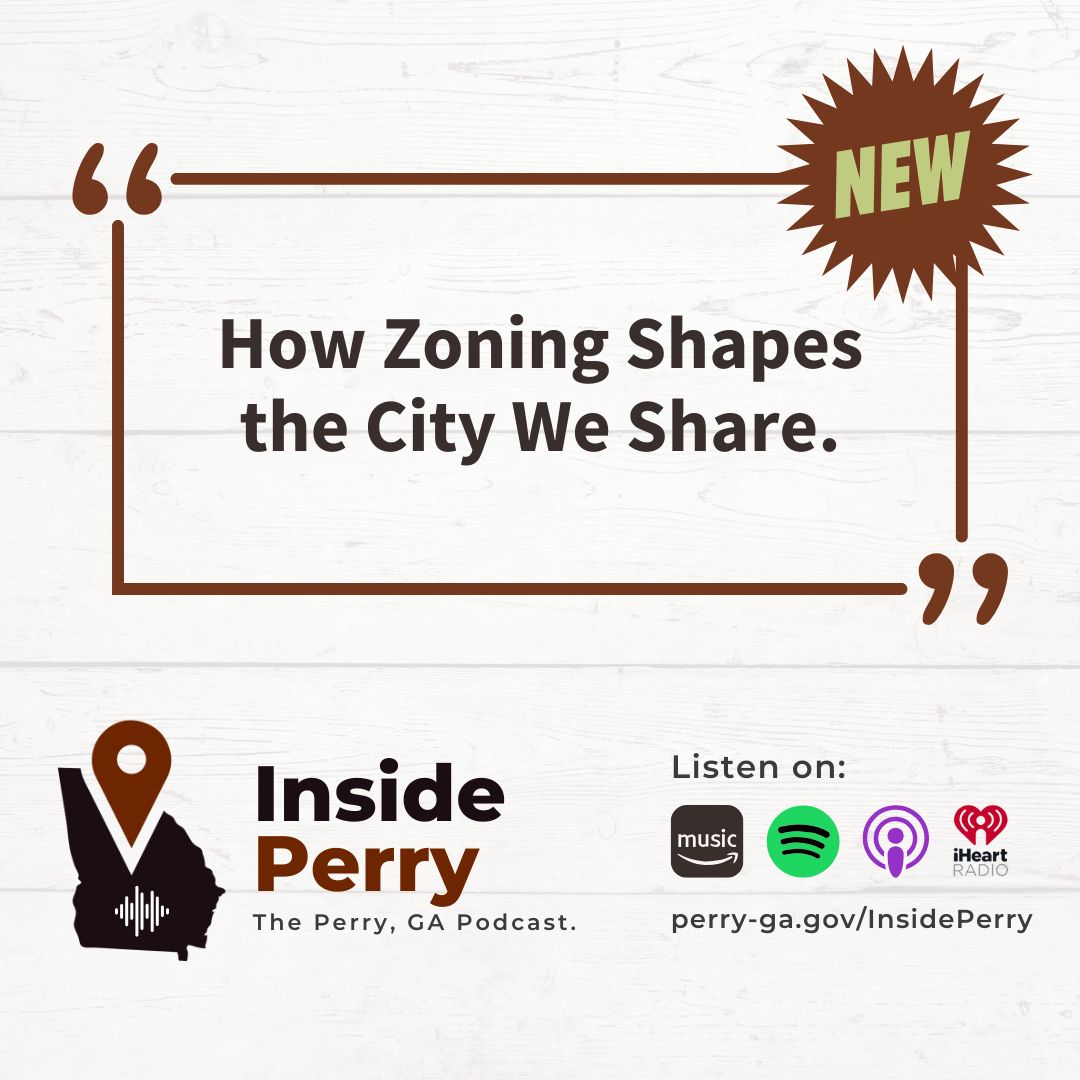How Zoning Shapes the City We Share
Zoning can feel abstract – until it reaches your street. In Perry, planning and zoning are the quiet guardrails that help neighbors, business owners, and builders share space.
At its core, zoning is about balance. Our zoning code, the City’s land management ordinance, defines where homes, offices, shops, and industries belong and how they should look from the street. It’s a system rooted in a century-old idea: protect people from incompatible uses, like living next to a noisy factory.
Today, Perry’s code helps guide growth so that new homes, jobs, and public spaces fit together in ways that feel cohesive and fair. While it’s not exactly light reading, it’s the backbone of how our community grows.
The Long-Range View
Beyond zoning, the City relies on a Comprehensive Plan – a big-picture roadmap that shapes Perry’s future. It’s required by state law, but here, it’s treated as an open invitation for residents to help define what comes next.
The plan sets the long-term vision: where more housing might go, how commercial corridors evolve, and what character we want to preserve. The zoning code then turns that vision into reality through specific rules and maps. Because needs change – housing demand, traffic, market shifts—the City updates these plans over time.
That flexibility is intentional. City staff, the Planning Commission, and the Mayor and Council use these tools to make thoughtful, measured decisions.
Rezoning, Step by Step
One of the most common questions residents ask is about rezoning. The process is detailed but transparent. Here’s how it works:
-
An applicant files a request explaining the proposed use.
-
City staff reviews the proposal against local policy and state criteria.
-
The Planning Commission holds a public hearing. Neighbors can voice support, ask questions, or share concerns.
-
The Commission makes a recommendation to the City Council, which votes at a later public meeting.
Along the way, proposals often change. Site layouts may shift, buffers expand, or designs adapt in response to feedback.
If you ever see a rezoning signon a property, that means a public hearing is coming up. You can visit the Planning & Zoning to review the application and follow its progress.
Not Every Project Needs Rezoning
Many projects already fit within their zoning district and simply require permits. Others may need a variance for minor adjustments, like a setback or fence height. Historic districts add another layer of review focused on maintaining Perry’s signature character and charm.
The best advice? Don’t assume. What’s simple on one lot can be complex on another. Before spending money on plans or materials, make a quick call to the City’s Community Development staff. They can look up your property, explain what’s allowed, and help you avoid costly surprises.
Planning Perry’s Future – Together
Perry will begin updating its Comprehensive Plan in 2026, and public input will shape the outcome. Over the course of a year, residents will have opportunities to weigh in on land use, transportation, parks, housing, and economic development.
In the meantime, stay engaged:
-
Attend Planning Commission and Council meetings.
-
Explore the Planning & Zoning pages.
-
Reach out to share your ideas or ask questions.
Because at the end of the day, the zoning map isn’t just lines – it’s how we share a city.

